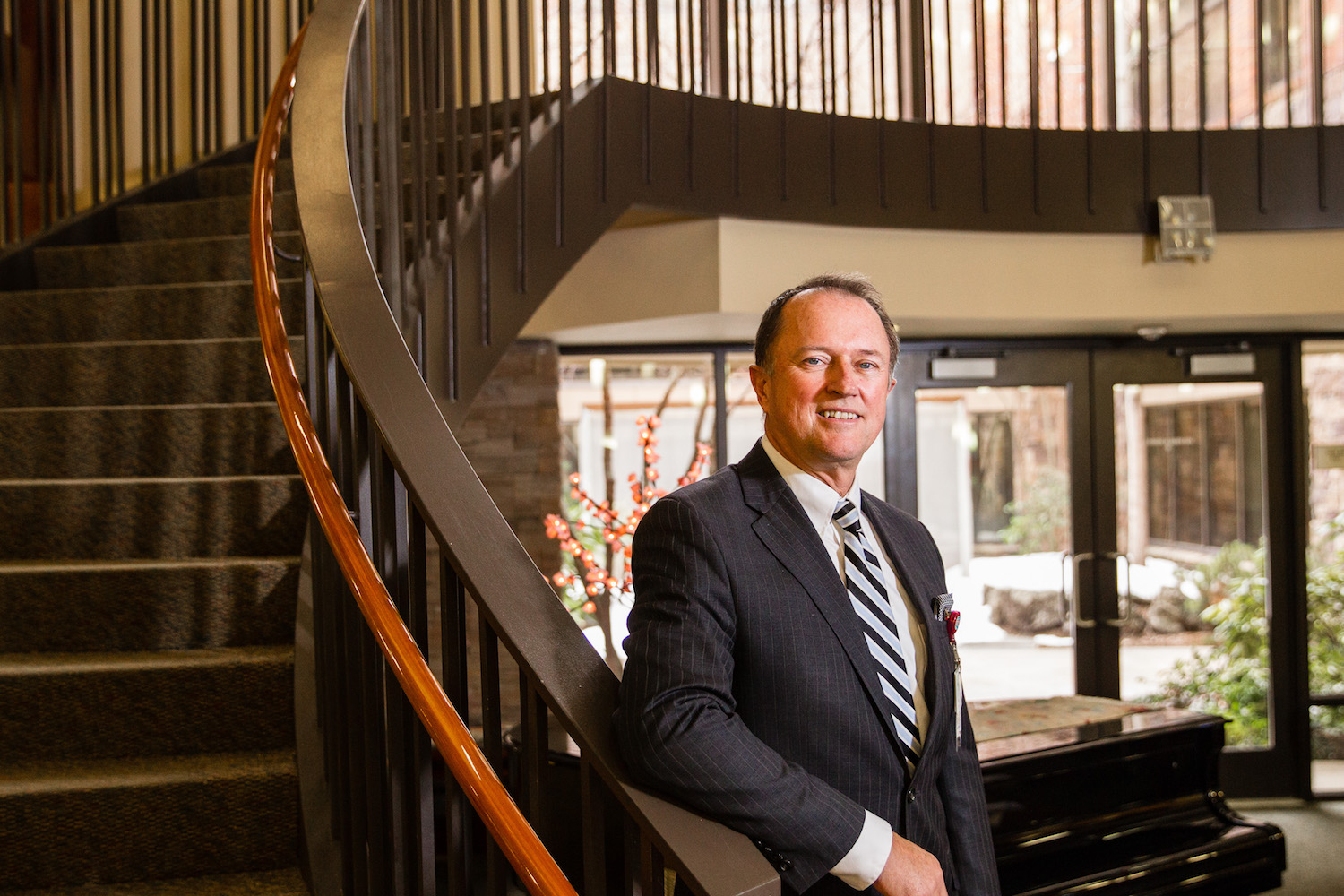Driving Change in Rural Oregon (Oregon Business Magazine)
Klamath County supercharges its tech and professional services engine

Bill Goloski/Oregon Tech Oregon Tech Optical Engineering professor, Scott Prahl, guides his student, Kelsey Leinbach.
To read the full article and others on the Oregon Business website, please refer to this link: Driving Change in Rural Oregon (OBM)
By: Erin J. Bernard, Oregon Business
Portland’s planted a Silicon Forest. Bend’s seeded a startup grove. And Klamath County is tilling the soils of Tech Hills Business Park – a 500-acre swath of shovel-ready industrial property at the apex of a broad economic revitalization gaining ground in central Southern Oregon.
Once, heritage industries like lumber and farming formed the economic backbone of the Cascade’s Range’s scenic eastern slope. Today, the county’s fast transforming into a livable, cost-effective technology-and-professional services hub.
How fast? The Klamath County Economic Development Association forecasts $1 billion in countywide infrastructure spending by 2021, with big growth in the energy, medical/health and education sectors. And rising right alongside the Tech Hills skyline is demand for a skilled workforce ready to drive this retooled economic engine.

500 acre shovel-ready Tech Hills Business Park
The operating costs are low, the collaboration is enthusiastic, and there are acres of room to grow.
Here’s what else you’ll find: affordable real estate (median single-family home cost is $128,300), fantastic outdoor recreation (Crater Lake National Park is an hour away), and energetic development efforts driven by KCEDA and supported by a dedicated band of local and regional economic development partners.
This county’s also got a community college and university, rail service and an airport, plus proximity to I-5 and the Willamette Pass. Portland, Reno and the Bay Area can all be reached in under five hours, and Bend’s just two hours distance.
Conspicuously absent: the rising costs plaguing Oregon’s larger cities. Land/lease rates, property taxes and cost of living are low here, and that benefits both relocating businesses and the workers they hire, says economist Sarah Murley, Principal at Applied Economics, a consulting firm that’s helped the county assess operating cots. “Costs are lower for both businesses and employees, and that’s important when you’re trying to recruit from other areas.”
These low operational costs have ensured a lean, efficient footprint for laser system and systems tooling manufacturer ESI, widely regarded as Oregon’s oldest high-tech company. ESI’s 54,000-square-foot Tech Hills tooling manufacturing plant began production in 2001 and has remained competitive with its offshore operations, ensuring stable jobs for employees. The company is eyeing Klamath operations as a future growth location in its long-term plans, says plant manager Allen Burns: “We have the land and room in our facility for future expansion. As a company, we are always looking at how to utilize what we have more effectively.”

Allen Burns, plant manager at ESI
Despite pay on par with timber wages, says Burns, filling full-time positions here, especially upper-level ones, can be challenging.
The county’s educational institutions are working overtime to meet Tech Hills’growing demand for skilled workers, particularly in the fields of engineering and health care, promises Jay Kenton, outgoing interim president for Oregon Institute of Technology. Around 700 students graduate each year from local college programs, and Kenton predicts the population at Oregon Tech – Oregon’s only four-year poly-technic university, located right in Tech Hills – could swell to 15,000 in a decade. The key now, he says, is enticing more of those outgoing students – especially the engineers – to go to work for the businesses located right at Oregon Tech’s front door.

A combination of on-campus solar and geothermal sources power the energy needs at Oregon Tech
“Rural Oregon, not unlike rural America, is really challenged economically today,” he says. “A lot of communities are having a hard time getting healthcare professionals and other professionals into the community and retaining them.”
This new groundswell of economic vigor has Kenton optimistic: “The raw materials are incredible here, and the opportunities are limitless. It’s a matter of getting everybody aligned, then getting their shoulder to the wheel and pushing.”
Just across the way from Oregon Tech’s campus sits Sky Lakes Medical Center. This private, not-for-profit community hospital – Klamath County’s biggest employer – offers a full range of inpatient and outpatient services and, in partnership with OHSU, operates Oregon’s only rural-based residency program, plus a new rural doctorate program.

Paul Stewart, president and CEO of Sky Lakes Medical Center
Each yea, eight family medicine physicians graduate from the Sky Lakes residency program, and half stay on, says Paul Stewart, president and CEO of Sky Lakes. What sells them? Outdoor pursuits, 300 days of sunshine, good schools and multidisciplinary health care delivery approach, says Stewart: “We collaborate well with everybody in town. That’s what we try to promote. This isn’t just a job; it’s an opportunity to be a part of an organization and a network that offers long-term professional growth.”
Now, Sky Lakes and OHSU, in partnership, are expanding educational offerings across the board, with fundraising underway to grow the recently inaugurated OHSU rural health campus and to build allied programs at Oregon Tech.
Going forward, rallying efforts around such shared goals is key, say Stewart and Kenton, and that’s just easier in a small town.
“We’ve been successful as a community in saying, ‘Here are the things we want to focus on to change this community, to help it grow and become more vibrant economically – an attractive place for businesses and others to come to,” says Stewart.
With momentum like this, Kenton believes, the sky’s the limit for Tech Hills: “We’re well positioned. I feel like I work for NASA and I’m working on the next rocket launch. This thing’s sitting on the launch pad, just waiting for somebody to hit the launch button.”







